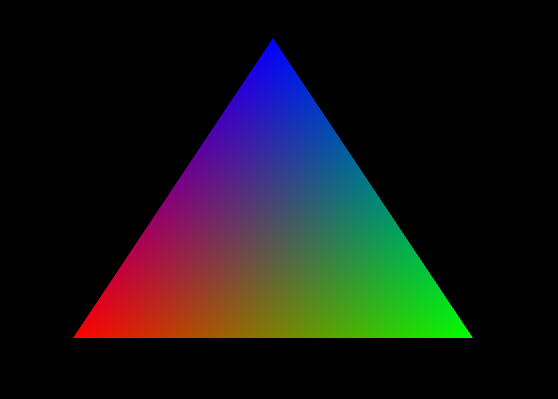Background
I'm looking at this example code from the WebGL2 library PicoGL.js.
It describes a single triangle (three vertices: (-0.5, -0.5), (0.5, -0.5), (0.0, 0.5)), each of which is assigned a color (red, green, blue) by the vertex shader:
#version 300 es
layout(location=0) in vec4 position;
layout(location=1) in vec3 color;
out vec3 vColor;
void main() {
vColor = color;
gl_Position = position;
}
The vColor output is passed to the fragment shader:
#version 300 es
precision highp float;
in vec3 vColor;
out vec4 fragColor;
void main() {
fragColor = vec4(vColor, 1.0);
}
and together they render the following image:
Question(s)
My understanding is that the vertex shader is called once per vertex, whereas the fragment shader is called once per pixel.
However, the fragment shader references the vColor variable, which is only assigned once per call to each vertex, but there are many more pixels than vertices!
The resulting image clearly shows a color gradient - why?
Does WebGL automatically interpolate values of vColor for pixels in between vertices? If so, how is the interpolation done?

